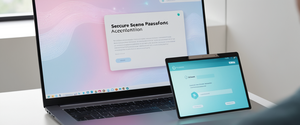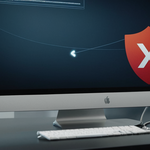
According to recent cybersecurity surveys, approximately 46% of Americans reported having their passwords stolen in 2024, highlighting the critical vulnerability of credential management in modern digital life. Within family units, password sharing has become an almost unavoidable practice, as households commonly maintain shared accounts for streaming services, WiFi networks, household management platforms, and financial services. However, the conventional methods by which family members exchange these credentials—through text messages, emails, verbal communication, or written notes—expose households to extraordinary security risks that can compromise not only individual accounts but also the financial and personal data of entire families. This comprehensive analysis examines the multifaceted landscape of secure password sharing within families, exploring both the fundamental security threats posed by unsafe practices and the sophisticated technological solutions that modern password managers provide to mitigate these risks. By integrating encryption technologies, access control mechanisms, emergency protocols, and user-friendly interfaces, contemporary password management systems have transformed family credential sharing from a dangerous necessity into a manageable security practice that strengthens household cybersecurity while maintaining the convenience families require.
The Critical Importance of Password Sharing Within Modern Family Structures
Password sharing within family units represents an almost unavoidable reality of contemporary household management. Unlike workplace environments where individuals typically maintain separate accounts and credentials, families frequently require shared access to accounts that serve household functions and improve quality of life. Streaming services like Netflix, Hulu, and Disney+ are commonly accessed by multiple family members who need convenient login capabilities without requiring the account holder to manually enter credentials for each use. Internet service providers and WiFi networks similarly demand that all household members retain access to connection credentials, yet traditional methods of password distribution create persistent security vulnerabilities. Shared financial accounts, household budgeting applications, smart home systems, and family calendars all require dissemination of login information across multiple people within the household structure. For elderly family members, password sharing often becomes necessary when adult children assist aging parents with account management or digital navigation. Young children may require parental access to educational platforms, gaming accounts, and social media profiles to enable supervision and safety monitoring. These practical realities create an inherent tension between the convenience and functionality that password sharing enables and the substantial security risks that insecure sharing methods introduce.
The statistical reality of password mismanagement within households is sobering. Research indicates that 63% of surveyed individuals reuse the same password across multiple accounts, a practice that becomes exponentially more dangerous when those passwords are shared within family networks. When a single shared password is compromised through data breach, phishing attack, or social engineering, all family members’ accounts and systems become vulnerable simultaneously. The average cost of a data breach has reached $4.45 million, with stolen credentials responsible for nearly half of all data breaches, indicating that compromised passwords represent a primary attack vector for cybercriminals targeting both individuals and institutions. Organizations spend an average of $5.2 million annually on password reset procedures and recovery processes, with employees losing approximately 11 hours per year to password-related administrative tasks. These economic realities underscore the profound inefficiency of existing password management practices, yet the risks extend far beyond financial costs to encompass potential identity theft, fraudulent account access, unauthorized financial transactions, and the exposure of sensitive personal information to malicious actors.
The Multifaceted Dangers of Unsafe Password Sharing Methods
Traditional password sharing practices, though seemingly convenient, introduce vulnerabilities that cybercriminals actively exploit through sophisticated attack methodologies. Email transmission of passwords represents one of the most common yet deeply problematic sharing methods employed by families. Email platforms lack end-to-end encryption by default, meaning password information travels across multiple servers and backup systems in plaintext format, creating numerous interception points where attackers can capture credentials. When an email account is compromised through phishing, credential stuffing, or malware, all historical emails containing passwords become accessible to threat actors who can then exploit those credentials across multiple platforms. Additionally, email creates a permanent digital trail that persists indefinitely, meaning passwords shared years earlier remain stored in backup systems and recovery services, extending the window of vulnerability far beyond the immediate period of sharing. Text messages, though often perceived as more secure than email, suffer from similar fundamental deficiencies. Text messaging services do not employ end-to-end encryption as a standard feature across all platforms, and messages are routinely backed up to cloud services where they remain vulnerable to unauthorized access. Attackers can intercept text messages through SIM hijacking, phone number spoofing, or compromise of cellular network infrastructure, and credential information transmitted via SMS provides attackers with direct access to shared accounts. Slack and other workplace communication platforms, while valuable for organizational coordination, similarly lack the security features necessary to protect sensitive credential information. These platforms do not employ encryption adequate to protect credentials, and their broader user base increases the risk that shared password information becomes visible to unauthorized users or is captured through account compromise.
More primitive password sharing methods introduce equally severe risks. Sticky notes and written password records, while disconnected from digital networks, remain susceptible to shoulder surfing, theft, and loss. Physical password records stored on desks or notebooks can be photographed, duplicated, or stolen by visitors, contractors, or other individuals with physical access to family environments. Children or elderly family members may inadvertently leave written passwords visible on surfaces where delivery workers, repair technicians, or other visitors might observe them. Once written passwords are lost, stolen, or discovered, there exists no mechanism for the original owner to know that their credentials have been compromised, leaving accounts vulnerable to unauthorized access that may go undetected indefinitely. Shared spreadsheets stored in cloud platforms like Google Sheets, while offering some accessibility features, represent a significant security vulnerability when they lack adequate encryption and access controls. When spreadsheets are shared through open links or with multiple users, the comprehensive list of passwords becomes accessible to anyone who obtains the link or credentials, and accidental sharing of spreadsheet links to unauthorized recipients creates massive credential exposure. Verbal communication of passwords, while leaving no written record, creates similar risks when family members record passwords through memory only to forget them, leading to password reset procedures, or communicate them in environments where others might overhear.
The specific attack methodologies that exploit unsafe password sharing practices are varied and sophisticated. Phishing attacks, in which cybercriminals impersonate legitimate organizations or trusted individuals, specifically target families sharing passwords through email by sending fraudulent messages that appear to originate from trusted sources while containing malicious links or requesting credential confirmation. Brute-force attacks attempt to guess passwords through systematic trial-and-error procedures, and when passwords are shared and reused across multiple accounts, a single successful brute-force attack compromises multiple systems. Credential stuffing involves attackers purchasing databases of previously compromised credentials from dark web markets and automatically testing those credential combinations across thousands of websites and services, exploiting the human tendency toward password reuse. When families share passwords without using encryption or access controls, these credentials may be exposed in data breaches and subsequently leveraged in credential stuffing attacks against all family members’ accounts simultaneously. Malware and keylogging software, when installed on devices used to access shared passwords, capture keystroke data or memory snapshots that reveal password information to attackers. If a single family member’s device becomes compromised with malware, the malware can capture shared passwords that provide access to all family members’ accounts and systems. The compromise of a shared device represents a particularly severe risk in family environments, where multiple individuals use shared computers, tablets, or smartphones to access household accounts and services.
Password interception on communication platforms creates additional vulnerabilities specific to family communication patterns. When families communicate password changes or updates through unencrypted channels, attackers who gain access to communication infrastructure can intercept updated credentials, and family members who fail to receive or recognize password update notifications may retain outdated credentials that provide access to accounts even after the original account holder has attempted to secure them. The inability to track actions on shared accounts creates both security and practical difficulties. When multiple family members share an account, it becomes impossible to determine which individual performed specific actions, making it difficult to audit account activity, detect unauthorized access, or investigate suspicious transactions. This tracking deficit proves particularly problematic for financial accounts, where shared credentials may obscure which family member initiated a transaction or incurred expenses. Loss of access when passwords are changed represents a frequent and frustrating consequence of uncontrolled password sharing. When the primary account holder changes a password for security reasons or in response to a suspected compromise, family members who received the original password retain no mechanism for accessing the updated credential unless they are explicitly notified, disrupting access to shared resources and requiring the account holder to manage manual renotification of all recipients.
Security Architecture and Encryption Fundamentals in Password Managers
Modern password managers employ sophisticated cryptographic and architectural approaches that provide security fundamentally superior to traditional password sharing methods. The foundational technology underlying password manager security is zero-knowledge encryption, an architectural paradigm in which the password manager provider itself has no capability to access or decrypt user passwords or sensitive information stored within vaults. In the zero-knowledge encryption model employed by leading password managers, user data is encrypted on the user’s device using cryptographic keys derived from the user’s master password and secret key before being transmitted to password manager servers. Because the encryption process occurs on the user’s device before data leaves their local environment, the password manager provider receives only encrypted data and has no means to decrypt or access that data without the user’s encryption keys. This architectural approach means that even if password manager servers are breached or compromised, attackers obtain only encrypted data that remains unreadable without access to the user’s encryption keys, which the user alone possesses. The most reputable password managers, including 1Password, Keeper, Dashlane, and Bitwarden, employ AES-256 bit encryption, the same military-grade encryption standard used by government agencies and financial institutions to protect classified information and sensitive financial data. This encryption strength creates an astronomical number of possible decryption combinations making brute-force decryption attacks computationally infeasible even for sophisticated attackers with substantial computational resources.
Password managers additionally employ sophisticated key derivation functions and salting mechanisms to protect the master password itself. Rather than storing the master password directly, password managers use PBKDF2 derivation functions with SHA256 secure hashing algorithms combined with random salt values to create unique master password hashes. Salt values are random data added to passwords before hashing, ensuring that identical passwords produce different hash values, preventing rainbow table attacks in which attackers use precomputed hash databases to rapidly identify common passwords. These cryptographic techniques mean that even if a password manager’s database is compromised, the hashes themselves provide attackers no direct path to discovering the original passwords, as the computational effort required to reverse cryptographic hashing exceeds the practical capabilities of most threat actors. The most secure password managers employ record-level encryption, in which each individual password record is encrypted separately rather than encrypting entire vaults at a single level. Record-level encryption provides granular security that prevents even users with vault access from reading other individuals’ passwords within shared password manager instances, enabling family members to maintain private credentials within shared password manager environments while still allowing controlled sharing of specific credentials with designated recipients.
Multi-factor authentication (MFA) represents a critical complementary security measure that transforms password manager protection from relying on master password strength alone to requiring multiple independent authentication factors. MFA implementations typically require users to provide at least two of three authentication factor categories: something the user knows (the master password), something the user possesses (a physical security key, authenticator app, or smartphone), and something the user is (biometric data such as fingerprints or facial recognition). When MFA is enabled on password manager accounts, attackers who successfully guess or steal a master password still cannot access the vault without providing a second authentication factor that they do not possess. Biometric authentication options, including fingerprint scanning and facial recognition on mobile devices, provide particular security advantages by removing the requirement for users to enter master passwords on shared devices or in public environments where keyboard observation or screen recording might compromise credentials. Hardware security keys, which employ FIDO2 standards and do not transmit secrets over networks even to the password manager provider itself, offer the highest security level available for multi-factor authentication, as they make phishing attacks against password manager accounts impossible even when attackers successfully obtain master passwords.

Secure Family Password Sharing Methods and Mechanisms
Contemporary password managers provide multiple distinct mechanisms for safely sharing passwords within family units, each offering different advantages suited to specific family sharing scenarios and relationships. Vault-to-vault sharing represents the foundational family password sharing mechanism offered by most password managers. In vault-to-vault sharing, the primary account holder shares specific password records with other family members who also maintain accounts in the same password manager, and shared records appear within the recipients’ vaults where they can access them using only their own master password. The access controls available in vault-to-vault sharing allow primary account holders to specify precisely what actions recipients can perform, with permission levels typically including “view only” access that permits reading but not modifying shared credentials, “can edit” permissions that allow recipients to update shared password information, and “can share” permissions that enable recipients to further disseminate shared passwords to additional people. Vault-to-vault sharing provides continuous access to shared passwords that automatically updates across all family members’ devices when the primary account holder changes shared credentials, eliminating the need for manual notification of password changes that frequently results in some family members retaining outdated passwords. This automatic synchronization prevents the access disruption that occurs when passwords are changed without notifying all users, as all family members receive the updated credential information in real-time. For family units in which all members maintain active password manager accounts, vault-to-vault sharing provides the most secure and convenient method of ongoing password sharing, as credentials remain encrypted throughout transmission and storage, and family members never observe credentials in plaintext form unless they choose to view them within the password manager application.
Keeper Password Manager’s One-Time Share feature represents an alternative sharing mechanism specifically designed for situations in which the recipient may not maintain an active password manager account. In One-Time Share functionality, the primary account holder generates a time-limited encrypted link containing specific password information that can be shared with anyone via email, messaging, or any other communication method. Recipients access One-Time Share links through standard web browsers without requiring a password manager account, though the sharing implementation employs robust security controls limiting access to designated recipients through one-time linkage, restricting viewing to a single device, preventing modification or further sharing by recipients, and automatically expiring links after a specified time duration. One-Time Share links can be manually revoked by the primary account holder at any time, providing granular control over credential access even after sharing links are distributed. This mechanism proves particularly valuable for sharing temporary passwords with family members during vacation periods, sharing credentials with elderly relatives who may be uncomfortable adopting new technology, or providing access to credentials for specific one-time purposes without requiring recipients to establish full password manager accounts. The time-limited and revocable nature of One-Time Share links introduces security properties absent from traditional password sharing methods, as credentials cannot be accessed indefinitely and the sharing relationship can be terminated without requiring password changes.
Family organization plans represent the most comprehensive password sharing architecture offered by leading password managers, providing dedicated family account structures with specialized features optimized for household credential management. Family plans typically allow six individual accounts within a single family organization, with the account holder creating the family structure and subsequently inviting additional family members to join. Within family organizations, each individual member maintains a separate private vault containing personal passwords and sensitive information known only to them, while shared vaults contain credentials for household accounts accessible to all family members or to designated subsets of family members. This dual-vault architecture enables families to balance the convenience of shared account access with the privacy and security necessary for personal accounts that should remain confidential even within family structures. Family organization administrators can manage vault permissions, control which family members have access to specific credentials, add and remove family members, and configure security policies applicable to the entire family organization. The administrative controls available in family plans enable account holders to implement age-appropriate security policies for younger family members, such as read-only access to certain family accounts or requiring confirmation before accessing sensitive credentials. Additionally, family organizations provide emergency access mechanisms that designate trusted family members who can request access to the account holder’s vault in emergency situations, with customizable wait times and approval mechanisms as described in subsequent sections of this analysis.
Leading Family Password Manager Solutions and Comparative Analysis
The landscape of family password managers available in 2025 encompasses multiple competing solutions, each offering distinct combinations of security features, pricing, user experience characteristics, and specialized functionalities suited to different family situations and preferences. 1Password consistently emerges as a leading recommendation across independent security evaluations and family-focused password manager assessments, particularly praised for its combination of military-grade security, exceptional user interface design, and family-specific features that extend beyond basic password storage. 1Password employs AES-256 bit encryption with zero-knowledge architecture, meaning 1Password company personnel cannot access user vaults or passwords even if company systems are compromised. The platform offers family plans at $4.99 per month for up to five family members with unlimited device synchronization, and users can add additional family members for $1 per person beyond the initial five. 1Password’s distinctive features include Travel Mode, which temporarily removes sensitive data from devices during international travel to protect against data loss if devices are confiscated or compromised during border crossings, and Watchtower, an integrated feature monitoring for data breaches affecting saved accounts and providing consolidated alerts when stored passwords have been exposed in public breaches. 1Password supports guest accounts that provide temporary access to family vaults without requiring full account creation, enabling parents to provide children access to shared family accounts while maintaining parental control over vault access permissions. The user interface is widely praised for elegance and intuitiveness, enabling even non-technical family members to quickly adopt the platform without extensive training or technical support. 1Password offers 24/7 email support for paid users, though live chat support is limited to business plan subscribers.
Keeper Password Manager represents another leading family password manager solution, particularly emphasized for its record-level encryption architecture providing exceptional security and its user-friendly interface suitable for families including less technically sophisticated members. Keeper employs AES-256 bit encryption with record-level protection, ensuring each individual password is separately encrypted within vaults rather than encrypting entire vaults as single units. Keeper’s Family plan accommodates up to five family members for $7.08 per month and includes five private vaults, one for each family member, along with shared folders enabling collaborative credential management. Keeper distinguishes itself through its One-Time Share feature available even in the free personal plan, enabling password sharing with non-Keeper users through time-limited, revocable encrypted links. Additionally, Keeper provides emergency access functionality enabling users to designate up to five trusted contacts who can request access to the vault after a specified wait time, with manual approval or automatic granting after the wait period expires. Keeper’s family plan includes 10 gigabytes of cloud storage for secure file storage beyond password credentials, and optional add-on features include BreachWatch for dark web monitoring and KeeperChat for encrypted family communication. Keeper holds the longest-standing SOC 2 Type 2 and ISO 27001 certifications in the password manager industry and has maintained an unblemished security record without any data breaches in its operational history. The platform supports comprehensive multi-factor authentication including biometric options and even smartwatch-based two-factor authentication through KeeperDNA technology. Keeper offers 24/7 live customer support via phone and online chat exclusively for paying customers, distinguishing itself through premium support accessibility.
NordPass, developed by the company behind the popular NordVPN service, positions itself as the best-value family password manager solution, offering family plans at approximately $1.99 per month for the first year or $3.69 per month at renewal for up to six family accounts. NordPass employs XChaCha20 encryption rather than AES-256, a modern cryptographic algorithm regarded as equally secure and arguably superior to AES-256 in certain technical characteristics. The platform provides each family member with a separate encrypted vault ensuring personal password privacy while enabling granular sharing of specific credentials through collection-based permission controls. NordPass includes password health monitoring that identifies weak or reused passwords within family vaults and recommends updates to strengthen password security across the family organization. The Data Breach Scanner monitors dark web marketplaces and publicly disclosed breach databases for indicators that family members’ passwords or personal information have been compromised in external breaches, alerting users so they can proactively change potentially exposed passwords. Email masking functionality generates unique masked email addresses for each online account, preventing merchants and service providers from obtaining family members’ actual email addresses and reducing the volume of targeted marketing and phishing emails directed at authentic addresses. NordPass offers cross-platform compatibility including Windows, macOS, Linux, iOS, and Android, with browser extensions for Chrome, Edge, Firefox, and Safari enabling seamless password autofill across web browsers. The 30-day money-back guarantee enables families to test the platform risk-free before committing to subscription.
Dashlane distinguishes itself through its generous family plan accommodating up to ten individual users for $7.49 per month, making it the optimal choice for large families or households including extended family members. Dashlane employs patented security architecture and AES-256 encryption combined with sophisticated threat detection algorithms that identify suspicious activity patterns potentially indicating unauthorized access attempts. The platform includes unlimited password sharing enabling family members to freely disseminate credentials among themselves without artificial sharing limitations. Dashlane integrates a built-in virtual private network (VPN) protecting family members’ internet activity from interception on public WiFi networks, though VPN access is restricted to the plan administrator with additional VPN seats available through separate purchases. Dark web monitoring continuously scans dark web marketplaces and forum communities for indications that family member credentials or personally identifiable information have been exposed or compromised, enabling proactive notification before detected information is weaponized by criminals. The platform provides comprehensive password health reports analyzing each family member’s password security practices, identifying duplicate passwords that increase breach vulnerability, and recommending specific password strengthening actions. Dashlane’s user interface is widely praised for intuitive design and accessibility, making adoption straightforward even for family members with limited technical expertise. The 30-day free trial and 30-day money-back guarantee enable risk-free evaluation before committing to paid subscriptions.
Bitwarden represents the open-source password manager option, emphasizing transparency through published source code that security researchers worldwide can audit for vulnerabilities. Bitwarden provides a fully functional free tier with unlimited password storage, password generation, and core vault functionality, making it ideal for families seeking zero-cost password management. The free personal tier supports single-user accounts, while Bitwarden’s Families organization plan accommodates up to six family members for approximately $3.33 per month, among the lowest pricing for comprehensive family password management. Bitwarden employs AES-256 encryption with zero-knowledge architecture ensuring user data privacy equivalent to commercial competitors. The open-source model means families can self-host Bitwarden servers on personal infrastructure rather than relying on company-managed cloud servers, providing maximum privacy for exceptionally security-conscious families, though self-hosting requires technical expertise and infrastructure management responsibility. Bitwarden Families organizations include emergency access functionality, password health reports, dark web monitoring integration, and unlimited secure password sharing through collections with granular permission controls. The platform synchronizes seamlessly across Windows, macOS, Linux, iOS, and Android devices, with browser extensions for all major web browsers.
Special Considerations for Diverse Family Structures and Members
Password management within families encompasses considerable diversity in family structure, member technical sophistication, and individual security needs that necessitate differentiated approaches for optimal outcomes. Elderly family members frequently require specialized consideration when implementing family password management systems. Older family members often have limited comfort with technology adoption and may resist incorporating complex software applications into their digital routines despite genuine security risks their current practices introduce. For elderly family members, password managers emphasizing simplicity of use, minimal navigation steps, and large, clear interface elements prove most effective at encouraging adoption. NordPass emerges as particularly well-suited for elderly users due to its intentional design prioritizing simplicity and clean interface presentation with large button text and straightforward menu hierarchies. When implementing password managers for elderly family members, adult children should configure the password manager completely, establish master passwords, and ideally set up biometric authentication using fingerprints, facial recognition, or other biometric methods that eliminate the requirement for elderly users to recall complex master passwords. Some families adopt the approach of storing elderly parents’ master passwords securely within their own password manager vaults, enabling assistance with account access when technical difficulties arise while maintaining clear protocols about appropriate access. However, this approach requires substantial trust and clear communication regarding the limits and appropriate uses of stored master passwords.
Children and adolescents present distinctly different password management challenges centered on cybersecurity education, parental supervision, and age-appropriate credential access management. Young children require parental oversight of password creation, storage, and usage to establish foundational cybersecurity habits that persist throughout their digital lives. Educational research indicates that approximately 71.59% of younger children (grades 3-5) report learning about good password use primarily at home rather than at school, making parents the primary educators of password security fundamentals. Parents should teach children that passwords serve access control functions, that passwords must remain private and never be shared with peers or social media contacts, and that strong passwords employ uppercase letters, lowercase letters, numbers, and special characters. Password managers specifically designed for family use enable parents to create junior accounts with restricted permissions where children have access only to designated accounts such as school portals or approved gaming platforms while maintaining complete visibility into account activity and login history. Guest accounts available in 1Password Families enable parents to grant children access to shared family vaults without permitting access to private family passwords or sensitive financial credentials. This tiered access control prevents children from accidentally discovering or inadvertently sharing sensitive passwords while still enabling them to access accounts their parents have explicitly approved. Parents should explicitly educate children that passwords should never be written on sticky notes, communicated through text messages or social media, or recorded in unencrypted files, establishing password security practices that prevent future compromise.

Emergency Access and Digital Legacy Planning
A frequently overlooked but critically important dimension of family password management involves planning for scenarios in which primary account holders become incapacitated through illness, injury, hospitalization, or death, circumstances that necessitate designated family members accessing vital financial, medical, and legal information stored within password vaults. LastPass Emergency Access functionality enables account holders to designate emergency contacts—other LastPass users whom they trust completely—who can request access to the account holder’s vault if an emergency occurs. When an emergency contact requests access, the vault owner is notified and has an opportunity to manually approve or deny the request. If the vault owner takes no action during a specified wait time configured by the account owner (ranging from immediately to extended periods such as days or weeks), access is automatically granted to the emergency contact. Emergency contacts receive access to the complete vault including passwords, secure notes, banking credentials, cryptocurrency wallet information, and other sensitive data the account holder has stored. This mechanism ensures that if the account holder becomes unconscious, hospitalized, or dies, designated family members can access vital information necessary to handle financial obligations, manage insurance claims, access medical records, or administer the deceased person’s estate.
Bitwarden similarly provides emergency access functionality with customizable parameters enabling account holders to specify which trusted emergency contacts can request access and how long emergency contacts must wait before access is automatically granted. The wait time mechanism serves an important protective function, as it prevents immediate access by emergency contacts even if vault credentials are compromised through phishing or other social engineering attacks, as attackers must both compromise the vault password and remain in control of the account for the full wait period to obtain access. When wait times are configured for 24 or 48 hours, account holders have opportunity to notice unauthorized emergency access requests and deny them before access is granted, providing a secondary layer of detection against compromise attempts. Bitwarden emergency access can be configured with either “view only” access enabling emergency contacts to read vault information without modification, or “takeover” access enabling emergency contacts to manage the vault and change the master password, with different configurations appropriate for different relationships and trust levels.
Digital legacy and estate planning represent related but distinct considerations from emergency access, addressing the long-term disposition of digital assets and passwords when account owners die. Many account holders accumulate digital assets including cryptocurrency wallets, investment accounts, digital collections, intellectual property, online businesses, and valuable digital content, all of which require credential access by heirs or estate administrators to properly distribute assets according to the deceased person’s wishes. LastPass enables account holders to create “digital wills” through secure folders within their vaults containing organized information about digital assets, cryptocurrency holdings, online banking information, social media accounts, subscription services, and other digital property. Account holders can maintain comprehensive inventory of digital assets alongside their associated passwords and access instructions, enabling heirs to locate and access digital property that might otherwise remain unknown or inaccessible. The emergency access mechanism then provides heirs or designated executors a means to actually access these digital assets by requesting vault access during the emergency access wait period following the account holder’s death. Digital legacy planning services such as DGLegacy provide specialized platforms addressing multi-stakeholder digital asset management, enabling account holders to catalog digital assets, designate multiple beneficiaries and trustees with different access levels to different asset categories, and establish heartbeat protocols confirming the account holder’s continued vitality with automated notifications to beneficiaries if the account holder fails to check in regularly. These specialized services address the complexity that emerges when digital assets span multiple platforms and accounts with different passwords and access requirements, consolidating asset information into centralized accessible locations that enable heirs to successfully identify and access digital property without requiring extensive knowledge of the deceased account holder’s digital habits.
Best Practices for Implementing Family Password Management Systems
Successful implementation of family password management systems requires attention to multiple practical considerations extending beyond technical platform features to encompass communication, governance, and change management dimensions. Family discussions should precede password manager adoption, with all household members understanding why centralized password management improves security over current practices, how the password manager will function, what responsibilities each family member assumes, and how the family will handle situations when members leave the household through moving, relationship dissolution, or other circumstances. These conversations establish realistic expectations, address concerns about privacy and data security, and enable family members to voice preferences about account structures and sharing arrangements. The family member establishing the password manager—typically the person most concerned about security or most technically knowledgeable—should configure the system completely before other family members begin using it, establishing master passwords, multi-factor authentication, emergency access designations, and vault structures. This approach prevents configuration errors or overly complex setup procedures from discouraging family member participation.
Master password creation deserves particular attention and intentionality, as the master password represents the single point of failure that compromises all family members’ credentials. Master passwords must be substantially longer and more complex than typical account passwords, as password manager security rests entirely on master password strength. Security experts recommend master passwords of at least 16 characters incorporating uppercase letters, lowercase letters, numbers, and special characters, avoiding dictionary words or personally identifiable information. Passphrases constructed from unrelated words offer particular value for master passwords, as they provide substantial length and complexity while remaining more memorable than random character strings. The family organizer should write the master password on paper and secure it in a location accessible to designated emergency contacts or heirs (such as a sealed envelope stored in a safe or with an attorney) so that if the family organizer becomes incapacitated and the master password is forgotten, designated individuals can recover access. Multi-factor authentication must be enabled on the password manager master account as a mandatory security control, as it prevents password manager compromise even if attackers successfully obtain master passwords through phishing, credential stuffing, or other attacks. Biometric authentication methods should be configured on personal devices enabling family members to unlock password managers without entering master passwords on shared devices or in public environments where observation could compromise credentials.
Regular security audits of family password vaults provide ongoing visibility into password security practices and identification of vulnerabilities requiring attention. Most contemporary family password managers include password health reports identifying weak passwords, reused passwords, and credentials exposed in known data breaches. Family members should address vulnerable passwords identified in health reports by changing affected passwords to stronger unique values and then updating credentials stored in the password manager. When family members receive notifications from password managers indicating their passwords have been exposed in external data breaches, they should immediately change the exposed passwords in both the affected external service and the password manager. Password manager dark web monitoring features automatically alert family members when their credentials or personally identifiable information appears in breach databases or dark web markets, enabling rapid response before exposed credentials are exploited by attackers.
Governance structures for shared family accounts require explicit discussion to prevent confusion and unintended consequences when multiple family members have access to the same credentials. When streaming services, WiFi networks, or financial accounts are shared among family members, one person should be designated as the “account owner” with primary responsibility for account management, password updates, and billing monitoring. Other family members should receive read-only access to shared credentials preventing unintended password changes that would disrupt the account owner’s access. Password changes should always be communicated to all family members who possess access to prevent situations where some family members retain outdated credentials following password changes. For household WiFi networks specifically, the designated owner should change the WiFi password periodically and ensure all family members receive updated credentials, as WiFi access credentials can become compromised through guests who later become security risks or through breach incidents affecting customers’ WiFi credentials.
Addressing Relationship Changes and Digital Security During Family Transitions
Family structures frequently change through romantic relationship dissolution, child independence, intergenerational relocation, or other transitions requiring adjustment of password sharing arrangements to maintain appropriate access control and security. When couples separate or divorce, both individuals retain knowledge of previously shared passwords enabling unauthorized access to accounts the other person intended to protect. Digital privacy experts recommend that individuals immediately change all passwords following a separation announcement, particularly for accounts containing sensitive information such as banking, healthcare, email, and cloud storage. Device connections should be reviewed and revoked as appropriate, with individuals identifying and removing shared devices from cloud accounts, revoking access for individuals with remote authentication ability, and verifying that only intended parties remain connected to accounts. Multi-factor authentication should be enabled on sensitive accounts preventing access even if passwords are compromised, and recovery contact information should be updated to reflect the individual’s current email addresses and phone numbers. For individuals who previously shared a family password manager account, the transition requires particular care to ensure the departing individual no longer maintains access to the remaining family’s private vault contents and shared family credentials. If the departing individual was the family account organizer, the remaining family members should prioritize reassigning account administrator permissions to ensure the departing individual cannot revoke others’ access or modify permissions. When children reach independence, parents should transition passwords for accounts the young adult intends to manage independently into the young adult’s own password manager vault, removing the young adult from access to parental accounts and financial credentials that were appropriately supervised during childhood but should remain confidential from independent adult children.
Workplace considerations increasingly intersect with family password management practices, particularly when individuals work remotely, use personal devices for work, or share devices between personal and professional contexts. Employers increasingly require employees to promptly disclose personal circumstances that might introduce security risks, such as relationship dissolution where an ex-partner might know work account credentials, loss of personal devices, or other events compromising credential security. Human resources and IT professionals should implement training enabling employees to recognize when personal situations introduce business security risks and feel empowered to report these concerns without fearing professional consequences. Organizations should establish clear protocols requiring password changes for work accounts potentially compromised through personal circumstances, enabling two-factor authentication on work systems, and reviewing device connections to corporate networks to identify and revoke potentially compromised device access. This intersection of personal and professional password security reinforces the importance of maintaining work and personal digital assets in completely separate systems, with work credentials never stored in personal password managers or accessed through personal devices shared with family members.
Keeping Your Family’s Digital Keys Secure
Sharing passwords safely with family members represents a complex challenge bridging security imperatives, practical household functionality, and human relationship dynamics that collectively shape how families protect their digital assets and credentials. The statistical reality that 46% of Americans experienced password theft in 2024 underscores that password compromise represents not a theoretical risk but a present danger affecting nearly half of the population, making implementation of secure password sharing practices a pragmatic necessity rather than optional sophistication. The conventional methods by which families have traditionally shared passwords—through email, text messages, written notes, and verbal communication—introduce fundamental security vulnerabilities that attackers actively exploit through phishing, credential stuffing, malware deployment, and other established attack methodologies. The technological capabilities offered by contemporary password managers, including zero-knowledge encryption, multi-factor authentication, granular access controls, encrypted password sharing mechanisms, and emergency access provisions, have transformed password sharing from an inherently risky practice into a manageable security function that enhances household protection while maintaining convenience.
The most effective family password management approach balances security rigor with practical usability, as overly complex systems that family members find difficult to use will ultimately be abandoned in favor of the very unsafe practices the system was designed to prevent. Leading solutions including 1Password, Keeper, NordPass, Dashlane, and Bitwarden each provide differentiated combinations of features, pricing, security architectures, and user experience characteristics, enabling families to select systems aligned with their particular circumstances, technical sophistication, budget constraints, and security requirements. Families should prioritize password managers offering zero-knowledge encryption ensuring the provider cannot access user credentials even if systems are compromised, supporting multi-factor authentication preventing compromise of accounts even if master passwords are stolen, and providing granular access controls enabling family members to share specific credentials while maintaining privacy for personal information. Implementation of family password management systems requires complementary attention to master password strength, emergency access planning, digital legacy documentation, and family governance establishing clear protocols for credential sharing, password updates, and access control modifications as family circumstances evolve.
Ultimately, the successful adoption of secure password sharing practices within families reflects not merely technological capability but cultural transformation in how households conceptualize credential management, security responsibility, and digital asset protection. Family members must understand that strong password security protects not only their individual accounts but the collective security of all family members, as compromise of a single family member’s credentials frequently provides attackers pathways to accessing other family members’ accounts through recovery mechanisms, shared devices, or social engineering attacks exploiting family relationships. Investment in family password management systems, while requiring initial setup effort and modest ongoing subscription costs, provides security returns vastly exceeding the investment through prevention of identity theft, unauthorized financial transactions, account takeovers, and data breaches that would otherwise prove far more costly in financial, temporal, and emotional dimensions. By implementing secure password sharing practices, enabling multi-factor authentication, planning for emergency access and digital legacy scenarios, and establishing family governance structures around credential management, households can substantially elevate their collective digital security while maintaining the convenience and account sharing that family life practically requires.
Protect Your Digital Life with Activate Security
Get 14 powerful security tools in one comprehensive suite. VPN, antivirus, password manager, dark web monitoring, and more.
Get Protected Now





